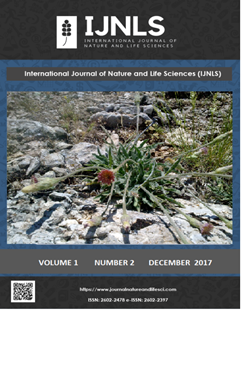Primary Evaluation of Anticancer Activity of Nanocurcumin® Against Human Breast Cancer Cell Line, SkBr3
Primary Evaluation of Anticancer Activity of Nanocurcumin® Against Human Breast Cancer Cell Line, SkBr3
Brest cancer, SkBr3 cell line, Nanocurcumin®,
___
- 1. Cridge, B.J., Larsen, L., Rosengren, R.J. 2013. Curcumin and its derivatives in breast cancer: Current developments and potential for the treatment of drug-resistant cancers. Oncology Discovery, 2052, 1-6.2. Carey, L., Winer, E., Viale, G., Cameron, D., Gianni, L. 2010. Triple-negative breast cancer: disease entity or title of convenience? Nature Reviews Clinical Oncology, 7(12), 683-692.3. Yallapu, M.M., Othman, S.F., Curtis, E.T., Bauer, N.A., Chauhan, N., Kumar, D., Jaggi, M., Chauhan, S.C. 2012. Curcumin-loaded magnetic nanoparticles for breast cancer therapeutics and imaging applications. International Journal of Nanomedicine, 7, 1761-1779.4. Lin, W., Cooper, C., Camarillo, I. 2014 June 17-19. The effectiveness of electroporation-based nanocurcumin and curcumin treatments on human breast cancer cells. In: Proceedings of ESA annual meeting on electrostatics, University of Notre Dame, Notre Dame, Indiana., USA, Electrostatics Society of America, 1-7.
- ISSN: 2602-2478
- Yayın Aralığı: Yılda 2 Sayı
- Başlangıç: 2017
- Yayıncı: Uğur ÇAKILCIOĞLU
Aydın KESKİN, Perihan GÜLER, Mustafa TÜRK
Aminul ISLAM, Leroy REBELLO, Sreesudha CHEPYALA
Review on Nanoformulations of Curcumin (Curcuma longa Linn.): Special Emphasis on Nanocurcumin®
Aminul ISLAM, Leroy REBELLO, Sreesudha CHEPYALA
Emine AYAZ TİLKAT, Alevcan KAPLAN, Engin TİLKAT, Gurbet BAĞLAMIŞ, Ahmet ONAY
